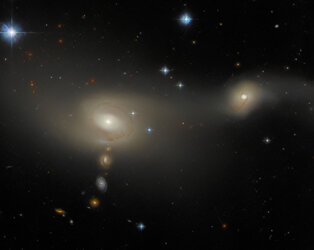Accept all cookies Accept only essential cookies See our Cookie Notice

About ESA
The European Space Agency (ESA) is Europe’s gateway to space. Its mission is to shape the development of Europe’s space capability and ensure that investment in space continues to deliver benefits to the citizens of Europe and the world.
Highlights
ESA - United space in Europe
This is ESA ESA facts Member States & Cooperating States Funding Director General Top management For Member State Delegations European vision European Space Policy ESA & EU Space Councils Responsibility & Sustainability Annual Report Calendar of meetings Corporate newsEstablishments & sites
ESA Headquarters ESA ESTEC ESA ESOC ESA ESRIN ESA EAC ESA ESAC Europe's Spaceport ESA ESEC ESA ECSAT Brussels Office Washington OfficeWorking with ESA
Business with ESA ESA Commercialisation Gateway Law at ESA Careers Cyber resilience at ESA IT at ESA Newsroom Partnerships Merchandising Licence Education Open Space Innovation Platform Integrity and Reporting Administrative Tribunal Health and SafetyMore about ESA
History ESA Historical Archives Exhibitions Publications Art & Culture ESA Merchandise Kids Diversity ESA Brand CentreLatest
Space in Member States
Find out more about space activities in our 23 Member States, and understand how ESA works together with their national agencies, institutions and organisations.
Science & Exploration
Exploring our Solar System and unlocking the secrets of the Universe
Go to topicAstronauts
Missions
Juice Euclid Webb Solar Orbiter BepiColombo Gaia ExoMars Cheops Exoplanet missions More missionsActivities
International Space Station Orion service module Gateway Concordia Caves & Pangaea BenefitsLatest
Space Safety
Protecting life and infrastructure on Earth and in orbit
Go to topicAsteroids
Asteroids and Planetary Defence Asteroid danger explained Flyeye telescope: asteroid detection Hera mission: asteroid deflection Near-Earth Object Coordination CentreSpace junk
About space debris Space debris by the numbers Space Environment Report In space refuelling, refurbishing and removingSafety from space
Clean Space ecodesign Zero Debris Technologies Space for Earth Supporting Sustainable DevelopmentLatest
Applications
Using space to benefit citizens and meet future challenges on Earth
Go to topicObserving the Earth
Observing the Earth Future EO Copernicus Meteorology Space for our climate Satellite missionsCommercialisation
ESA Commercialisation Gateway Open Space Innovation Platform Business Incubation ESA Space SolutionsLatest
Enabling & Support
Making space accessible and developing the technologies for the future
Go to topicBuilding missions
Space Engineering and Technology Test centre Laboratories Concurrent Design Facility Preparing for the future Shaping the Future Discovery and Preparation Advanced Concepts TeamSpace transportation
Space Transportation Ariane Vega Space Rider Future space transportation Boost! Europe's Spaceport Launches from Europe's Spaceport from 2012Latest

Emission versus absorption
Thank you for liking
You have already liked this page, you can only like it once!
For this Picture of the Week, the NASA/ESA Hubble Space Telescope turned its powerful eye towards an emission line galaxy called NGC 3749.
When astronomers explore the contents and constituent parts of a galaxy somewhere in the Universe, they use various techniques and tools. One of these is to spread out the incoming light from that galaxy into a spectrum and explore its properties. This is done in much the same way as a glass prism spreads white light into its constituent wavelengths to create a rainbow. By hunting for specific signs of emission from various elements within a galaxy’s spectrum of light — so-called emission lines — or, conversely, the signs of absorption from other elements — so-called absorption lines — astronomers can start to deduce what might be happening within.
If a galaxy’s spectrum shows many absorption lines and few emission lines, this suggests that its star-forming material has been depleted and that its stars are mainly old, while the opposite suggests it might be bursting with star formation and energetic stellar newborns. This technique known as spectroscopy, can tell us about a galaxy’s type and composition, the density and temperature of any emitting gas, the star formation rate, or how massive the galaxy’s central black hole might be.
While not all galaxies display strong emission lines, NGC 3749 does! It lies over 135 million light-years away, and is moderately luminous. The galaxy has been used a “control” in studies of especially active and luminous galaxies — those with centres known as active galactic nuclei, which emit copious amounts of intense radiation. In comparison to these active cousins, NGC 3749 is classified as inactive, and has no known signs of nuclear activity.
-
CREDIT
ESA/Hubble & NASA, D. Rosario et al.; CC BY 4.0 -
LICENCE
CC BY 4.0 INT or ESA Standard Licence
(content can be used under either licence)

All lined up

Hiding a bright secret

Sighting forbidden light

LINER on collision course















 Germany
Germany
 Austria
Austria
 Belgium
Belgium
 Denmark
Denmark
 Spain
Spain
 Estonia
Estonia
 Finland
Finland
 France
France
 Greece
Greece
 Hungary
Hungary
 Ireland
Ireland
 Italy
Italy
 Luxembourg
Luxembourg
 Norway
Norway
 The Netherlands
The Netherlands
 Poland
Poland
 Portugal
Portugal
 Czechia
Czechia
 Romania
Romania
 United Kingdom
United Kingdom
 Slovenia
Slovenia
 Sweden
Sweden
 Switzerland
Switzerland

























